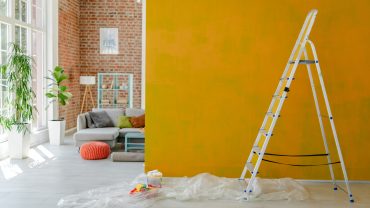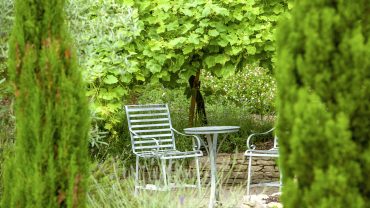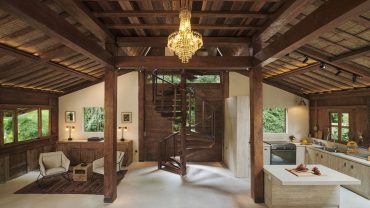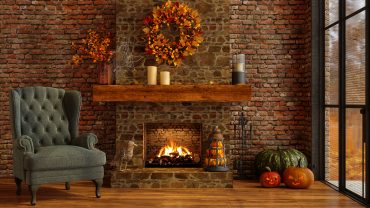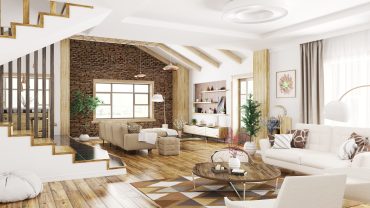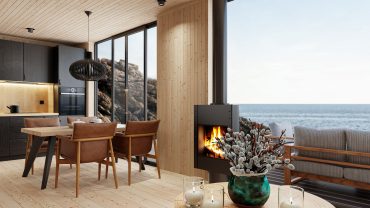What does mid-century decor look like? Characterised by clean lines, organic forms, and minimal ornamentation, the essence of mid-century modern interior design lies in its ability to create functional spaces without sacrificing aesthetic appeal, a testament to the vision of its mid-twentieth-century designers.
As well as eschewing the ornate frills of the pre-war Art Deco style with functional yet beautifully designed furniture, mid-century modern interior design was also an ideal, a look to a brighter, optimistic future, embracing a way of living that looked forward rather than backwards.
To understand the principles of ‘what is mid-century modern decor’ is to recognise the influence of the Bauhaus school, as well as the freedom of versatility, innovative engineering, mass production techniques, spontaneity and experimentation with exciting new materials.
So, whether you want inspiration for your new house or you’re looking to bring a touch of mid-century magic to a town centre apartment, let’s find out the answer to the question ‘what is mid-century interior design?’
A Short History of Mid-Century Modern Interior Design

A modern and stylish living room, utilising Mid-Century modern interior design. (Credit: Oscar Wong via Getty Images)
Tracing the history of mid-century modern interior design takes us back to the post-World War II era, a time marked by reconstruction and a yearning for change.
This period saw an explosion of creativity and experimentation in design, fueled by technological advancements and an optimistic outlook towards the future. The movement has its roots in the 1930s but started to gain real momentum after the war and lasted until the early 1970s.
As houses became more practical and less formal, designers like Arne Jacobsen, Charles and Ray Eames, Florence Knoll, George Nelson, Charlotte Perriand and Eero Saarinen redefined what modern living could look like, embracing materials such as plastic, metal and fabrics to produce functional yet beautiful – often iconic – furniture. Their creations weren’t just visually appealing; they embodied a new way of living, one that valued simplicity, harmony with nature, and the democratisation of design
The Principles of Mid-Century Modern Interior Design

A modern mid-century living area. (Credit: Boris SV via Getty Images)
What is mid-century modern decor? Its principles are grounded in a philosophy that champions simplicity, functionality, and a connection to nature.
This design ethos often incorporates a palette of vibrant colours juxtaposed with neutral tones, creating spaces that feel both vibrant and energetic yet calming and serene. Furniture is typically sleek and uncluttered, with an emphasis on organic shapes and smooth lines. The use of glass, plywood, vinyl, and metal is prevalent, reflecting a fascination with different materials and their potential in creating new, innovative forms.
While mid-century modern interior design is rooted in a specific historical context, it’s also incredibly adaptable. But as with almost all design styles, it’s about finding a balance.
The Mid-Century Modern Interior Design Colour Palette

A typical mid-century modern colour palette, featuring orange, red, and beige (Credit: Volanthevist via Getty Images)
The colour palette of mid-century modern design is a distinctive mix that reflects the era’s optimistic spirit and experimental nature. It skillfully balances neutral tones with bold, vibrant colours, creating a dynamic yet harmonious look.
The foundation of this style’s palette includes earthy and neutral shades. Colours such as olive green, mustard yellow, burnt orange, and various shades of brown – as well as the ‘colours’ of natural wood, from light birch to deep walnut – reflect the era’s inclination towards natural elements and materials which create a warm and inviting atmosphere. It’s also famous for its daring use of bright and saturated hues like teal, deep blues, bright reds, and sunny yellows, featuring in accent pieces, artwork and textiles, providing a striking contrast to the foundation colours.
Pastel colours struck a good balance between the two, and black and white were often used in graphic patterns or as a tool for creating visual contrast.
Mid-Century Furniture

A room featuring mid-century modern furniture. (Credit: Boris SV via Getty Images)
What is mid-century modern interior design furniture? Some of the most recognisable and iconic furniture ever made – timeless designs that remain incredibly popular and fashionable today – are mid-century modern designs.
The Eames Chair & Ottoman needs no introduction, and the Saarinen Dining Table, the Florence Knoll Sofa and the Arne Jacobsen Egg Chair are equally as famous, but you don’t need to fill your home with original pieces from the most famous twentieth century furniture designers.
Mid-century modern furniture is renowned for its simplicity, functionality, and timeless aesthetic. The design is characterised by clean, sleek lines and organic shapes, often made from new materials like moulded plastic, aluminium, and plywood, as well as traditional materials like wood.
Furniture pieces are elegantly understated, with a focus on functionality and form, often featuring tapered legs, minimal ornamentation, and a fusion of different materials. It is designed to be both aesthetically pleasing and highly practical, embodying the era’s innovative spirit and the move towards modern living.
Mid-century modern interior design furniture is not only visually striking but also ergonomic in design. The use of vibrant colours and geometric patterns in upholstery adds a playful yet sophisticated element. The overall effect is a style that is at once both retro and futuristic, reflecting the optimism and creativity of the mid-twentieth century.
The Enduring Appeal of Mid-Century Modern Interior Design

Mid-century modern interior sitting area. (Credit: YKvision via Getty Images)
Mid-century modern design remains a testament to the timeless appeal of simplicity, functionality, and elegance in home decor.
Its unique blend of organic forms, bold colours, and innovative use of materials offers a versatile and enduring aesthetic that transcends generations and it’s clear that its principles of clean lines, ergonomic design, and a connection with nature continue to resonate in contemporary spaces.
When we ask ‘what is mid-century modern decor’, the answer provides endless inspiration for creating spaces that are both beautiful and livable, proving that great design is indeed timeless.




